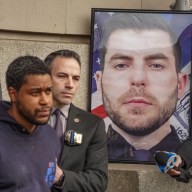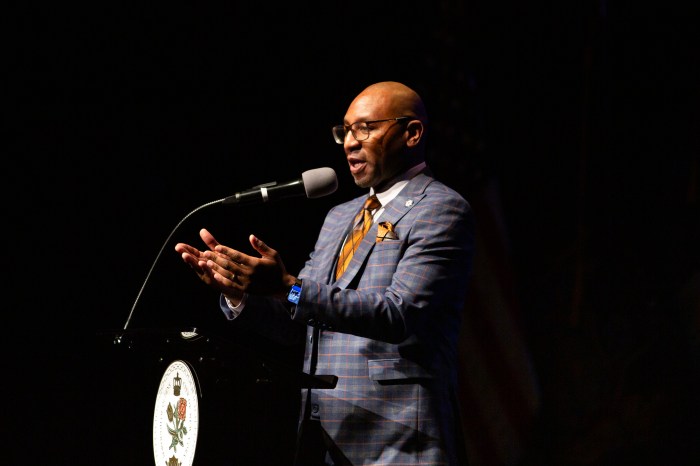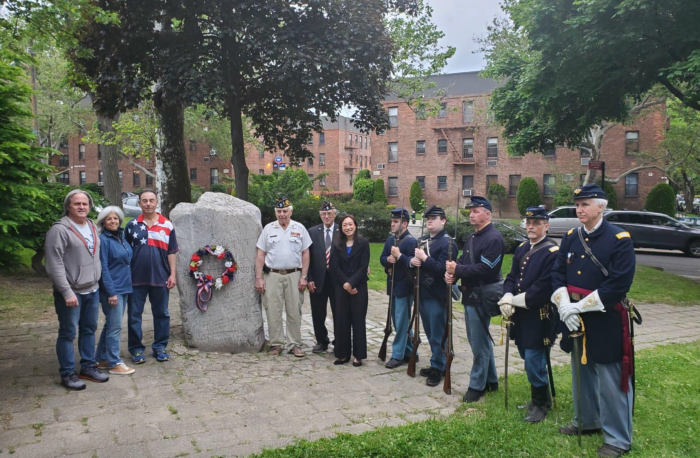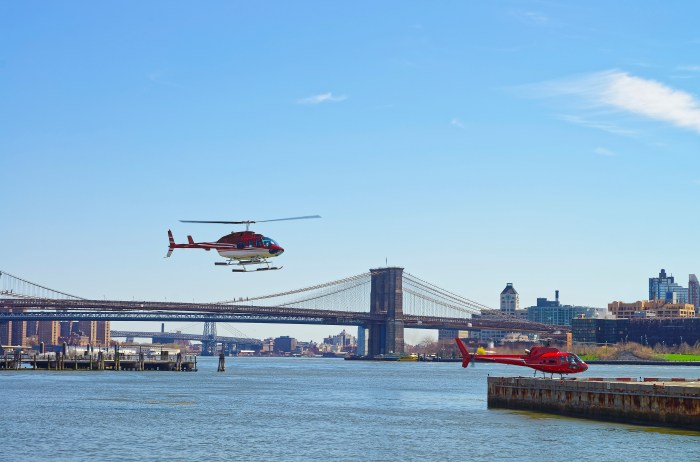By Tammy Scileppi
As Queens commemorates the 100th anniversary of the sinking of RMS Titanic and the events surrounding her fateful journey, it’s customary to recount those fascinating, decades-old tales and anecdotes that are part of this never-ending story.
In 1898 (14 years before Titanic), M. Robertson wrote a prophetic fictitious novel called “Futility,” about a huge ship hitting an iceberg in the Atlantic Ocean on a cold April night. The fictitious ship, the Titan, was similar in design to the Titanic, and their circumstances were remarkably alike — both stories ended tragically, with the loss of many souls.
In stark contrast to the cowardly actions of the captain who made recent headlines after fleeing his cruise ship, Costa Concordia, after it capsized in Tuscany, RMS Titanic’s captain, Edward John Smith, did indeed go down with his ship, along with 1,500 passengers, who drowned or froze to death in icy waters on April 15, 1912.
The centennial of Titanic’s sinking was honored during a standing-room only event April 2, hosted by the Greater Astoria Historical Society in Long Island City. Titanic enthusiast, author and photographer Gary Vollo, from Astoria, shared his theories with dozens of attendees, while showing actual footage of the ship and its passengers.
Bob Singleton, the society’s executive director, addressed curious audience members, including a Titanic fan from Fresh Meadows, who said she took two buses and a train to get there.
Comparing the Titanic disaster to events on 9/11, he said, “In both cases, the unthinkable happened: Technology ran amok; a huge structure failed; people of many nations, gone; both events, subjects of investigations and controversy. Both disasters seemed to mark the sudden end of something: a sense of complacency, of confidence, innocence and vulnerability.”
Guest speakers Vollo and “Titanic Joe” Colletti, who once owned Titanic House — Colletti’s private home in Long Island City he dedicated space as a Titanic museum — shared intriguing first-hand accounts of survivors they had met at past Titanic Historical Conventions.
Vollo recalled his meeting with Philip Aks, 10 months old at the time of the sinking. He was taken from his mother’s arms and separated from her. Frantically looking for her son after the rescue ship brought survivors to New York harbor, his mother spotted him in the arms of a woman who claimed he was her baby. But the captain helped identify a birthmark on “Filly’s” chest, reuniting mother and son.
Vollo’s “Titanic 101 crash course” drew emotional reactions from folks inquiring about the disaster. One woman asked if the shipping company was ever sued (apparently, it wasn’t). A young boy wanted to know: “How come the Titanic went so fast? And did it really split apart?” To which Vollo replied: “The warnings went unheeded, and it did break in half from the pressure on the stern.”
“My feeling is if the captain had gone straight into the iceberg, instead of trying to steer away, the ship may have not sunk, as only the front would have been destroyed. But the ship hit the iceberg from the side; the berg kept banging into it, causing five compartments to flood,” Vollo explained. Titanic sank two hours and 40 minutes later.
Although Smith was warned of icebergs seven times that day, he maintained his speed of 22 knots. Some said he made good time; others still say he was trying to break a record.
At 62, the bearded captain was a striking fellow. Sporting his seaman’s cap and dressed in summer whites, he posed for photos taken in the early 1900s, unaware that his long, distinguished career would end in tragedy. He planned on retiring after Titanic’s maiden voyage.
Two years before commanding the ship, Smith made this famous statement: “I can’t conceive of any kind of situation happening that could cause a ship to founder (sink).”
There are rumors that when the ship collided with the infamous berg at 11:40 p.m., the quietly flamboyant captain may have been quite tipsy. One account said he seemed indecisive when he arrived on the bridge and gave his second officer the order to man the 16 lifeboats — women and children first.
Survivor stories
The strange series of events that led to the epic disaster were like a perfect storm. Surprisingly, it was an unusually warm winter and the ocean was as smooth as a lake, with no ice caps breaking.
The mammoth luxury liner had 2,228 passengers on board. Sailing from Southampton, England for four days, she made two stops — in France and Queenstown, Ireland — but never made it to New York’s Pier 59, her final stop. They brought survivors to Pier 54, at 13th Street and 11th Avenue (where the façade still stands), on the RMS Carpathia, which was 58 miles away when it picked up Titanic’s two distress signals.
“When I was younger, I saw the film ‘A Night to Remember.’ It ignited my interest in Titanic,” said Vollo. “What happened was like a script. It was phenomenal.”
First class passenger Benjamin Guggenheim was traveling with his mistress, who escaped on a lifeboat. As the water rushed into his cabin, the dapper millionaire was dressed in his evening best. They said he went down like a gentleman.
Macy’s founder Isidor Straus and wife, Ida, wouldn’t be separated and perished together.
Yet another story was told of a desperate fellow who dressed as a woman to escape the sinking ship.
Eva Hart, 7, was traveling second class with her parents, from Southampton, England. The family was headed to Canada through New York to open a drugstore there. Her mother had a premonition that something bad would happen. Sadly, Eva’s father drowned.
“I knew I was going to meet the survivors one day,” said “Titanic Joe” Colletti, who met seven people, and finally got to interview Hart in 1988. She was 87 then, and remained his friend for eight years, until her death.
“Eva told me it haunted her, the rest of her life — she had nightmares. But she also remembered how beautiful the ship was — the fresh paint, the wood; that there were fresh flowers everywhere. It used to be called ‘the ship of flowers,’” he added.
Colletti became an avid collector of Titanic memorabilia after he saw “Raise the Titanic” in 1980. “There was a picture of the propeller being built in Belfast. That hit me. I can’t explain it to you, but it seemed to plant something in me.”
He also knew Millvina Dean, Titanic’s youngest passenger, and the last one to survive, at 97. At 9 weeks old, she was lowered to safety in a mail sack.
After Dean died in 2009, no more survivors were left to tell their stories.
As Titanic’s great bow sank into the depths of the dark sea, the band continued to play.
After the event, there was a book signing with author Lindsay Gibbs, who wrote “Titanic: The Tennis Story,” about two American tennis players who met on the RMS Carpathia, and went on to play each other in the quarterfinals of the US Open in Newport, R.I. in 1914.
“It’s such an amazing story that I wanted to bring it to life,” she said.
The film, “A Night to Remember” will screen at the Greater Astoria Historical Society, 35-20 Broadway, 4th floor, Long Island City, on Saturday, April 14, at 1 p.m.





































